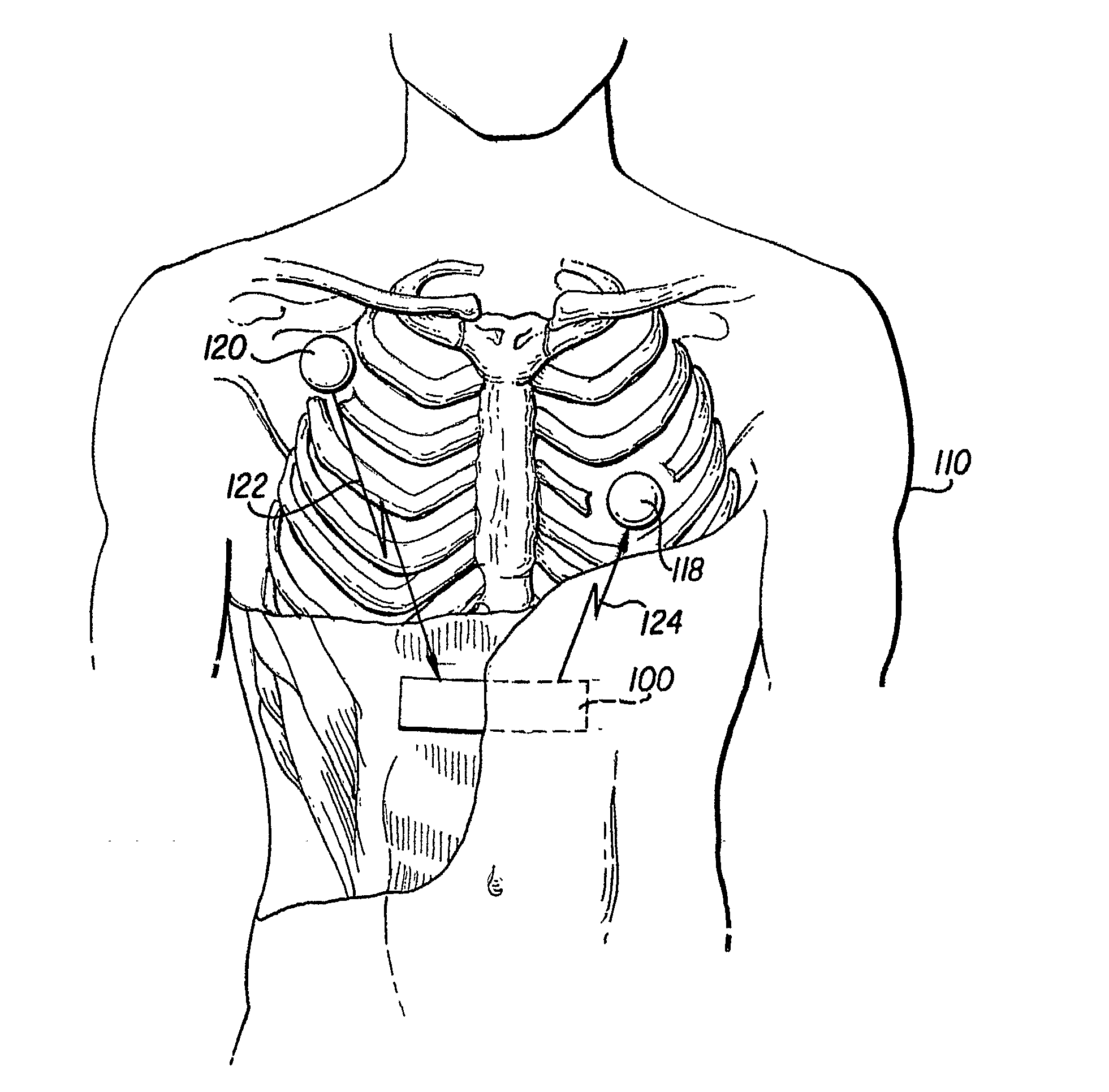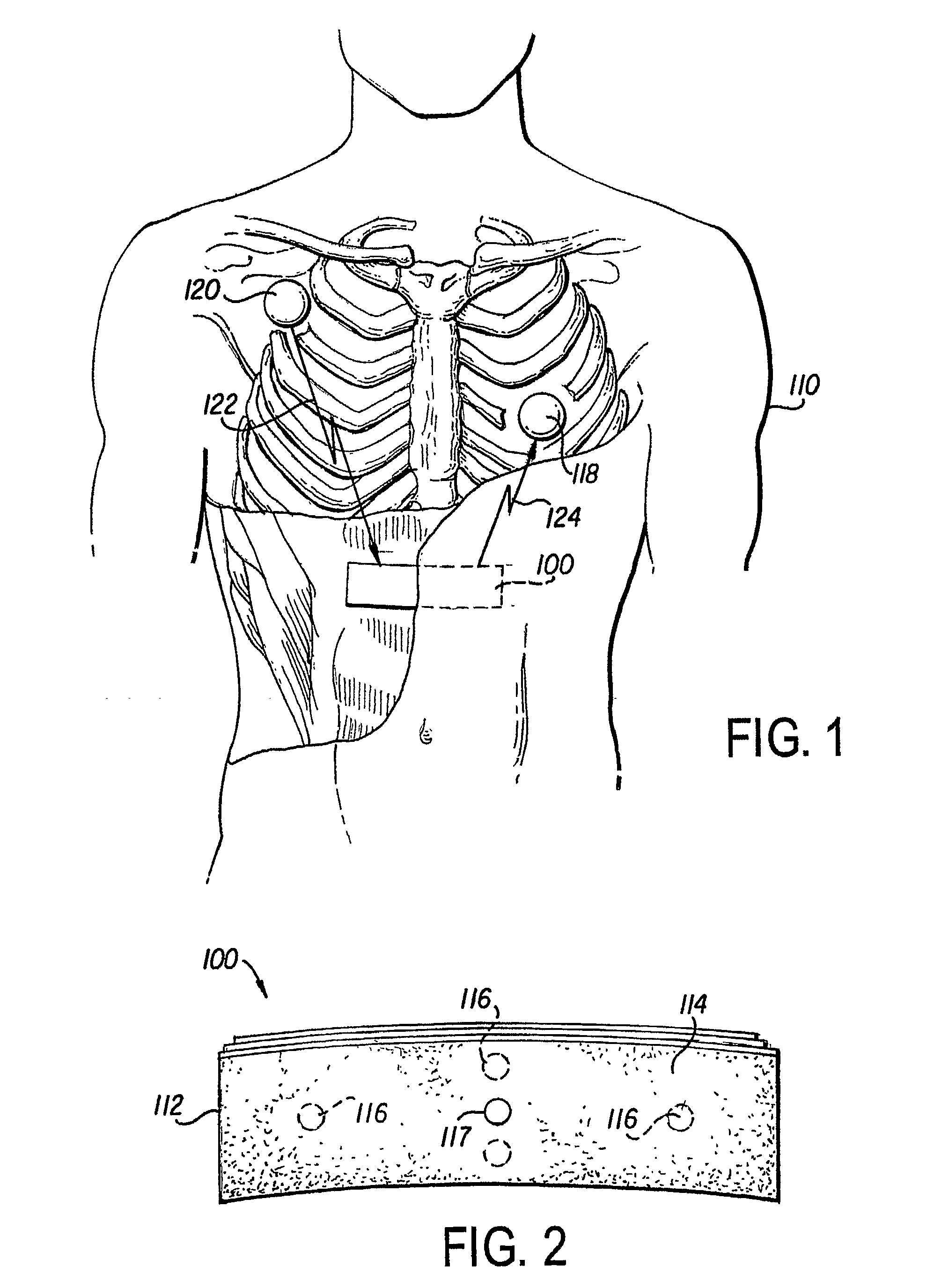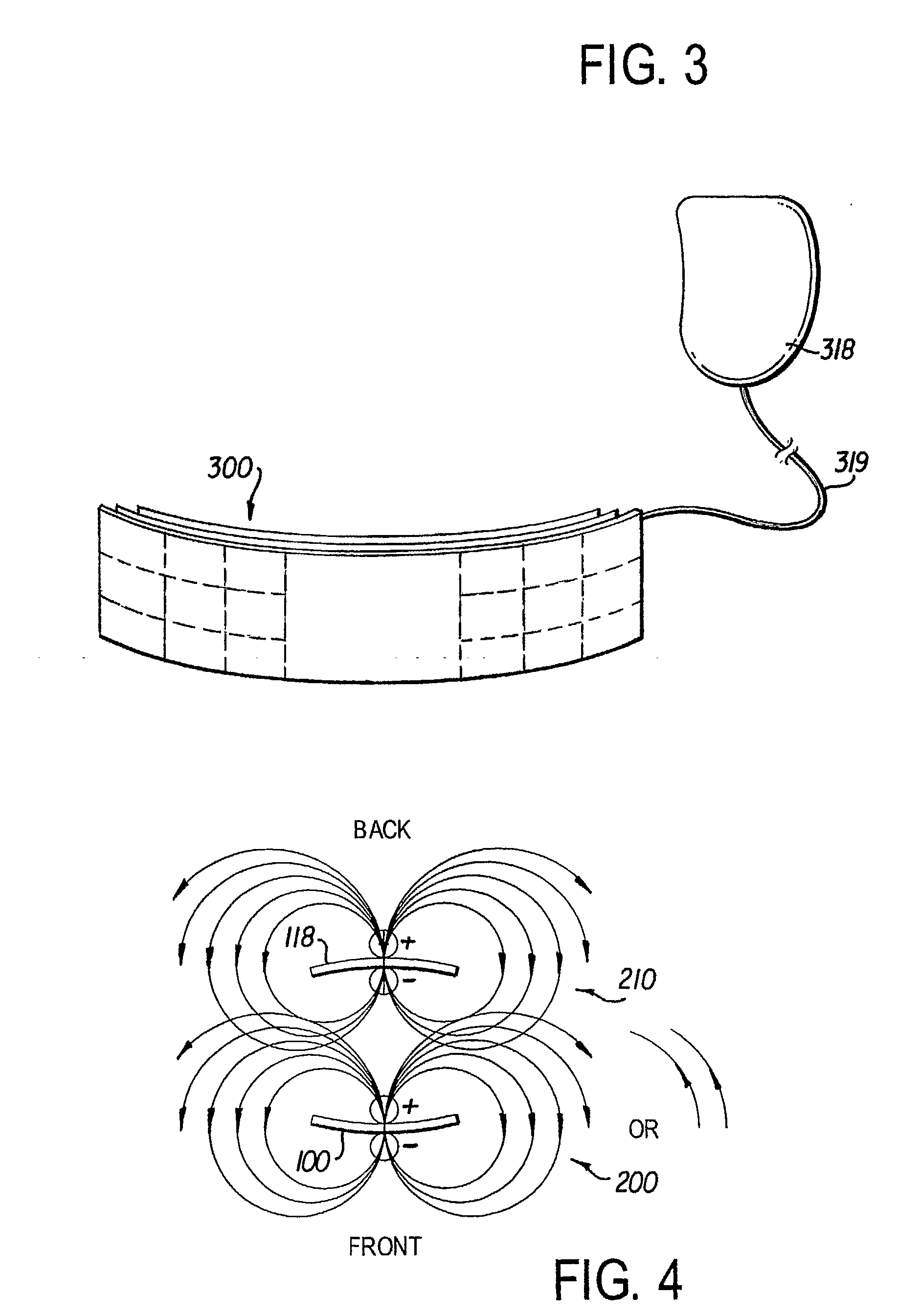Leadless Implantable Cardioverter Defibrillator
a cardioverter and implantable technology, applied in the field of cardioverter defibrillators, can solve the problems of insufficient blood pumping to sustain life, hampered technology, and prone to acute risk of cardiac tamponade in technology
- Summary
- Abstract
- Description
- Claims
- Application Information
AI Technical Summary
Benefits of technology
Problems solved by technology
Method used
Image
Examples
Embodiment Construction
[0015]In describing a preferred embodiment of the invention illustrated in the drawings, certain specific terminology will be used for the sake of clarity. However, the invention is not intended to be limited to that specific terminology, and it is to be understood that the terminology includes all technical equivalents that operate in a similar manner to accomplish the same or similar result.
[0016]FIG. 1 shows a preferred embodiment of the implantable cardioverter defibrillator (ICD) 5. The defibrillator 5 includes a controller 100 and one or more satellite sensors 118, 120. The controller 100 is surgically implanted in the subcutaneous tissue in proximity to the chest and abdomen of a medical patient 110. The purpose of the ICD 5 is to produce an electrical stimulus or shock that either paces the heart or defibrillates the heart and returns the heart to a normal rhythm. The device 5 needs to be in close proximity to the target organ (here, the heart) in order to provide the highes...
PUM
 Login to View More
Login to View More Abstract
Description
Claims
Application Information
 Login to View More
Login to View More - R&D
- Intellectual Property
- Life Sciences
- Materials
- Tech Scout
- Unparalleled Data Quality
- Higher Quality Content
- 60% Fewer Hallucinations
Browse by: Latest US Patents, China's latest patents, Technical Efficacy Thesaurus, Application Domain, Technology Topic, Popular Technical Reports.
© 2025 PatSnap. All rights reserved.Legal|Privacy policy|Modern Slavery Act Transparency Statement|Sitemap|About US| Contact US: help@patsnap.com



